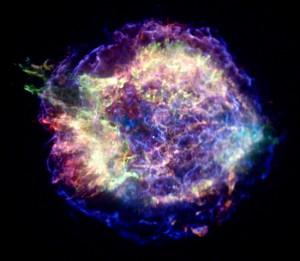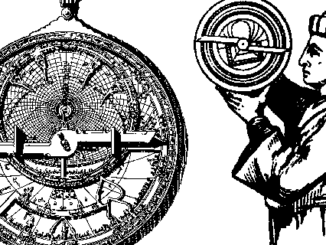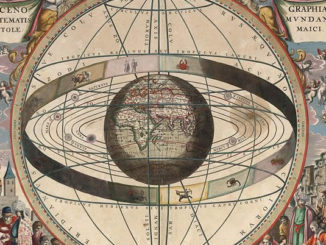If we learn how electrons accelerate, can we know…

…the engine moving the ions and protons buzzing around the universe? The source of the acceleration of these Cosmic Rays has long baffled astrophysicists. An analysis of data from the Chandra Observatory may have provided an important clue to the answer the mysterious behind Cosmic Rays.
For fifteen months during the years 2004 and 2005, scientists pointed the Chandra Advanced CCD Imaging Spectrometer (ACIS) to a remains of what was then believed to be the youngest supernova remnant in the Milky Way – an expanding debris field of a the explosive finale of red superstar around 1667AD. [In 2008, astronomers discovered a 140 year-old supernova whose close proximity to the dust shrouded galactic center made it impossible for Earth-based observers to see back then (source: http://www.sciencedaily.com/releases/2008/05/080514131118.htm).]
According the official release (http://chandra.harvard.edu/photo/2006/casa/), data produced by ACIS allowed astronomers to detail the acceleration of electrons within the fast expanding nebula wrought forth by the cataclysmic devastation during the star’s violent demise. They discovered these particles were being accelerated at close to their theoretical speed limits (that’s where the “relativistic” part comes in). But, more interesting has been the apparent source of this acceleration. Like a slow moving pinball ricocheting from the bumpers of your typical arcade machine (that’s where the “pinball” part comes in), each electron bounces off the magnetic fields in the shock wave. With each bounce, the electron gains acceleration. After enough bounces – a few as fifty years worth and as many as two hundred years worth – these miniature charged particles can zoom through the universe at relativistic speeds.
Since its discovery by Henri Becquerel in 1896, radiation has captivated, first, terrestrial scientists and then, both astronomers and the public when, thirty years later, Robert Millikan proved their origin to be extraterrestrial and originated the term “cosmic rays.” Later, we would find cosmic rays pose problems to humans aboard long space journeys. Millikan himself, though, came out on the losing end of an argument as to what exactly these little buggers were. He thought they came from the “birth cries” of newly created atoms – the same kind of spontaneous creation that evokes similarities with cosmology’s steady-state theory. Ironically, the ACIS data suggests cosmic rays come not from the birth of atoms, but from the death of stars.




Be the first to comment